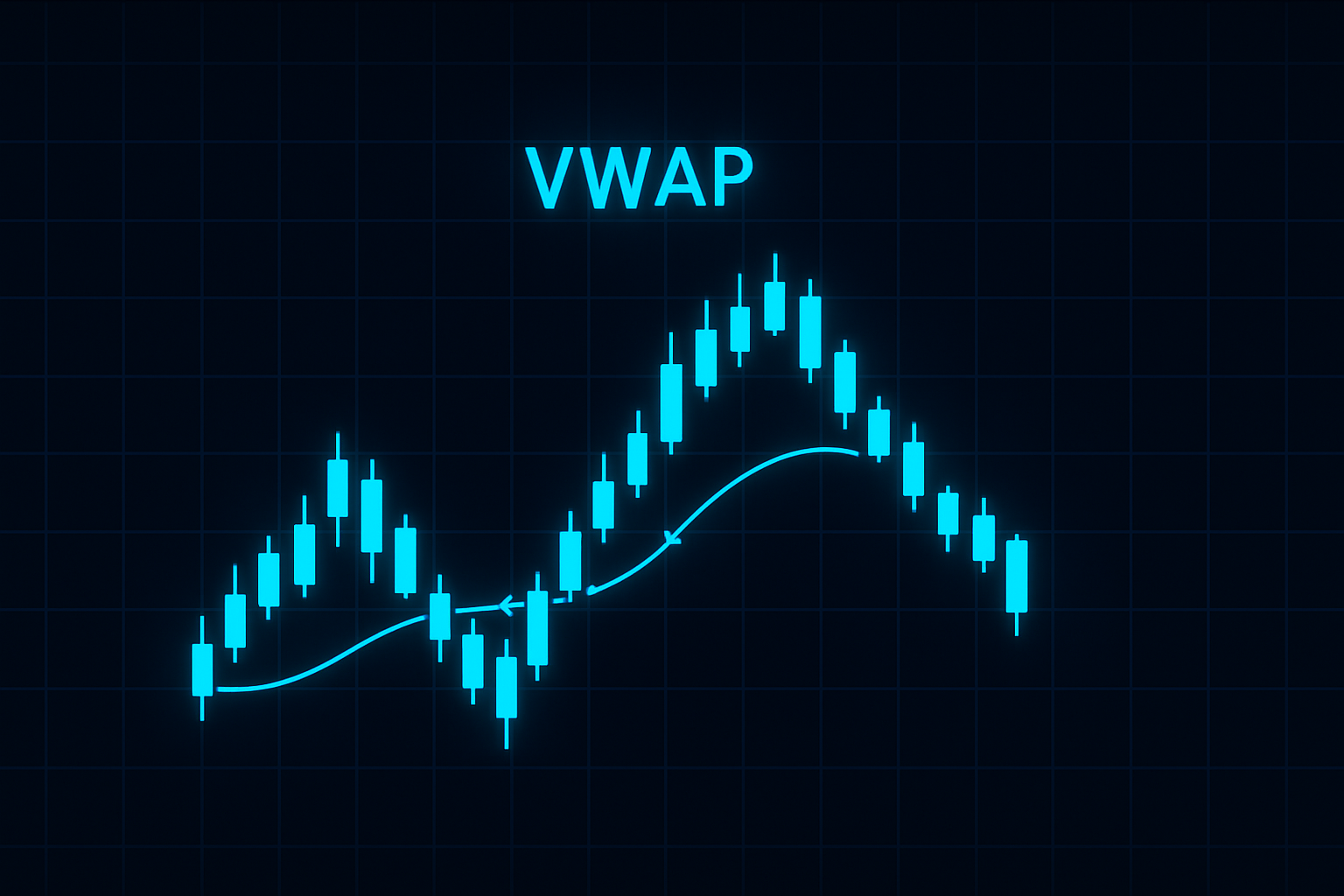What is VWAP and How to Use It in Trading?
The Volume Weighted Average Price (VWAP) is a powerful and widely-used trading indicator that helps traders gauge the average price of an asset, adjusted for its trading volume. Unlike simple moving averages, VWAP incorporates both price and volume into its calculations, making it an invaluable tool for identifying fair value, trends, and potential trading opportunities.
Understanding VWAP
At its core, VWAP answers a simple question: “At what average price did the majority of trading occur over a specific period?” This makes it particularly useful for institutional traders who aim to minimize market impact and achieve a price close to the average trading price.
How VWAP is Calculated:
The formula for VWAP is straightforward:
VWAP=∑(Price×Volume)∑VolumeVWAP = \frac{\sum{(Price \times Volume)}}{\sum{Volume}}
Here:
- Price refers to the typical price of each trade (e.g., the average of high, low, and close prices).
- Volume is the number of shares, contracts, or units traded during the period.
VWAP is recalculated with every new period (e.g., each minute or hour), and it resets daily, making it most effective for intraday trading.
Why VWAP Matters
- Fair Value Benchmark: VWAP helps traders identify whether the current price is above or below the average trading price for the day.
- Above VWAP: Indicates bullish sentiment (price is trading higher than average).
- Below VWAP: Indicates bearish sentiment (price is trading lower than average).
- Institutional Use: Large traders use VWAP as a benchmark to avoid influencing the market excessively. Their goal is often to buy below or sell above VWAP.
- Trend Confirmation: When the price stays consistently above or below VWAP, it suggests a strong trend.
How to Use VWAP in Your Trading
1. Identify Buy and Sell Zones:
- Buy Zone: If the price is below VWAP but starts to rise toward it, it may indicate accumulation or a potential bullish reversal.
- Sell Zone: If the price is above VWAP but begins to fall, it could signal distribution or a bearish reversal.
2. Combine VWAP with Other Indicators:
- Support and Resistance: VWAP can act as a dynamic support or resistance level, especially in trending markets.
- Moving Averages: Use VWAP in conjunction with moving averages to confirm trends.
- RSI or MACD: Pair VWAP with momentum indicators to confirm overbought or oversold conditions.
3. Spotting Breakouts:
- If the price breaks above VWAP with strong volume, it may signal a bullish breakout.
- Conversely, a break below VWAP with heavy selling could indicate a bearish breakout.
4. Intraday Reversion Trades:
- VWAP often acts as a magnet, with prices frequently retracing back toward it during intraday sessions. Traders can exploit these reversions for scalping opportunities.
Practical Example
Let’s say you’re trading stock XYZ, and the VWAP for the day is $100:
- If the stock trades at $98, it’s below the VWAP, indicating it’s undervalued for the session. A bounce back toward VWAP may offer a buying opportunity.
- If the stock trades at $102, it’s above the VWAP, signaling it’s overvalued. A reversion to $100 could present a short-selling opportunity.
Tips for Using VWAP Effectively
- Stick to Intraday Trading: Since VWAP resets daily, it’s most useful for intraday analysis and strategies.
- Avoid False Signals: Combine VWAP with other tools like trendlines, candlestick patterns, or volume analysis to validate signals.
- Monitor Volume: Ensure breakouts or reversals near VWAP are supported by strong volume for higher accuracy.
- Don’t Overtrade: While VWAP is powerful, avoid chasing trades solely based on VWAP without a clear strategy.
Limitations of VWAP
- Lagging Nature: VWAP is a lagging indicator as it’s based on historical data. It works best as a confirmation tool rather than a leading indicator.
- Not for Long-Term Use: VWAP resets daily, so it’s not suitable for swing or position trading.
Conclusion
The Volume Weighted Average Price (VWAP) is an essential tool for intraday traders, offering insights into market trends, fair value, and potential trade setups. By integrating VWAP into your trading strategy alongside other indicators, you can enhance your decision-making and improve your chances of success.
Whether you’re a beginner or an experienced trader, mastering VWAP can provide a significant edge in navigating the markets effectively.


Leave a Reply